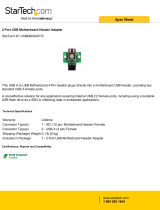- 3 -
Table of Contents
Box Contents ...................................................................................................................4
GA-6UASL1 Motherboard Layout ....................................................................................5
Chapter 1 Hardware Installation .....................................................................................7
1-1 Installation Precautions .................................................................................... 7
1-2 ProductSpecications ...................................................................................... 8
1-3-2 Installing the CPU Cooler .......................................................................................11
1-4 Installing the Memory ..................................................................................... 12
1-4-1 DualChannelMemoryConguration .....................................................................12
1-4-2 Installing a Memory ...............................................................................................13
1-5 Back Panel Connectors .................................................................................. 14
1-6 Internal Connectors ........................................................................................ 16
1-7 Jumper Setting ............................................................................................... 25
Chapter 2 BIOS Setup ..................................................................................................29
2-1 The Main Menu .............................................................................................. 31
2-2 Advanced Menu ............................................................................................. 33
2-2-1 ProcessorConguration .........................................................................................34
2-2-2 MemoryConguration ............................................................................................38
2-2-3 AdvancedChipsetConguration ............................................................................39
2-2-4 ACPIConguration .................................................................................................40
2-2-5 SATAControllerConguration ................................................................................41
2-2-6 PCIConguration ...................................................................................................42
2-2-7 USBConguration ..................................................................................................44
2-2-8 LegacyDeviceConguration ..................................................................................45
2-2-9 PowerConguration ...............................................................................................46
2-2-10 Console Redirection ...............................................................................................47
2-2-11 Hardware Monitor ...................................................................................................49
2-3 Security Menu ................................................................................................ 50
2-4 Server Management Menu ............................................................................. 52
2-4-1 System Information ........................................................................................ 53
2-4-2 EventLogConguration ................................................................................. 54
2-5 Boot Option Menu .......................................................................................... 56
2-6 Boot Manager ................................................................................................. 58
2-7 Exit Menu ....................................................................................................... 59




















